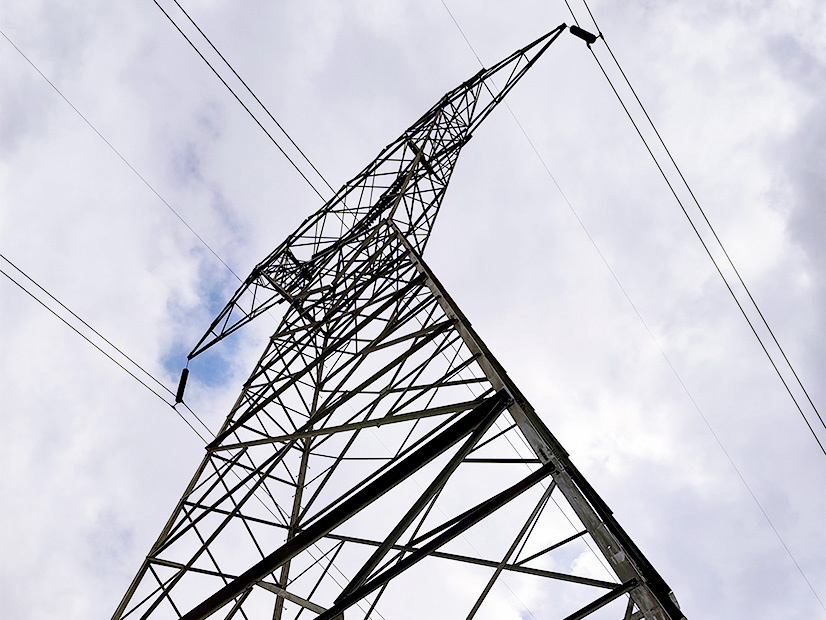A growing chorus of stakeholders is hoping to see a final transmission planning rule from FERC sometime in the New Year, with a set of letters sent to the commission last week.
A group of nongovernmental organizations including Advanced Energy United, American Clean Power Association, Earthjustice, Environmental Defense Fund and Sierra Club said finalizing the transmission planning rule was important to ensuring the incentives from the Inflation Reduction Act actually get used and increasing the resilience of the grid to extreme weather.
“The electric industry is undergoing a major transformation driven by consumer, utility and corporate preferences, state public policies and the cost-competitiveness of renewable energy,” said the letter sent to FERC Dec. 8. “The commission’s transmission planning and cost allocation standards must be up to the challenge of enabling this transition while ensuring the continued provision of reliable and affordable electricity at just and reasonable rates.”
Another letter largely signed by power companies and labor including Ameren Transmission, Consolidated Edison, Exelon, the Blue-Green Alliance and the IBEW International also urged FERC to act.
“We support the commission’s proposal for regional, long-term, scenario-based transmission planning and urge the commission to issue, as soon as practicable, a final rule that will facilitate needed transmission investment,” the letter said. “The commission should ensure that the final rule is sufficiently robust to achieve the commission’s goal of ensuring just and reasonable rates and ‘remedy[ing] deficiencies in the commission’s existing regional transmission planning and cost allocation requirements.’”
FERC still has one more meeting this year, but it is unlikely to move the final transmission rule, as it has yet to issue a substantive order on rehearing for Order 2023, in addition all the other work before its staff, said consultant Rob Gramlich at a press event Dec. 8 hosted by Americans for a Clean Energy Grid.
“The chairman and his staff have been saying, ‘we want this to be durable, legally, you know, we’ve got to dot every I and cross every T and make sure,’” Gramlich said. “You know, most rules like this do get challenged and, so, they’re planning for that. And … that’s all competing against time. We don’t have time. It feels to me like 18 months is enough. It’s time to get the order out.”
The last time FERC issued major transmission reforms was Order 1000 in 2011, and that was meant to be an iterative process, said ACEG Executive Director Christina Hayes. A major issue driving the change then was state policies, especially renewable portfolio standards.
“I think it’s a matter of kind of evolving the process and evolving the analysis, where things right now are very focused on the silos — economic reliability, and policy silos — and kind of breaking free of those and recognizing that renewable requirements are being driven by customers, by utilities, who are getting out ahead of their states,” she added.
Gramlich said Congress also could move forward on transmission proposals, including a bipartisan permitting reform effort led by Sens. Joe Manchin (D-W.Va.) and John Barrasso (R-Wyo.).
While transmission largely is a priority for Democrats in this Congress, it was not always that way. The Energy Policy Act of 2005, with its reforms on transmission, came out of a Republican Congress and was signed by a Republican president. There’s reason to believe the party might get on board with transmission reforms this time.
“Everybody cares about reliability,” Gramlich said. “Everybody will soon be aware of massive load growth that’s happening for the first time in over two decades. And that’s a reason to build transmission. So, there’s a lot of nonclimate reasons if climate isn’t your priority.”
Even once all the policies are put in place, the industry and regulators will have a massive job working to expand the grid. Princeton University has said the grid needs to expand by 60% by 2030 and triple by 2050, but that does not even take into account the amount of industrial reshoring and other sources of demand growth, Hayes said.
“I think we can do it,” Gramlich said. “And we know that because we did do it 10 years ago. If you look at, like, 2013: the MISO MVPs come online, the SPP Priority Projects, ERCOT CREZ (Competitive Renewable Energy Zones), the Tehachapi buildout — all in one year. That happened to be in the same year when there was another period of time when everybody was talking about big transmission … and we got a lot done. And then … we kind of like just lost our momentum for a variety of reasons.”

